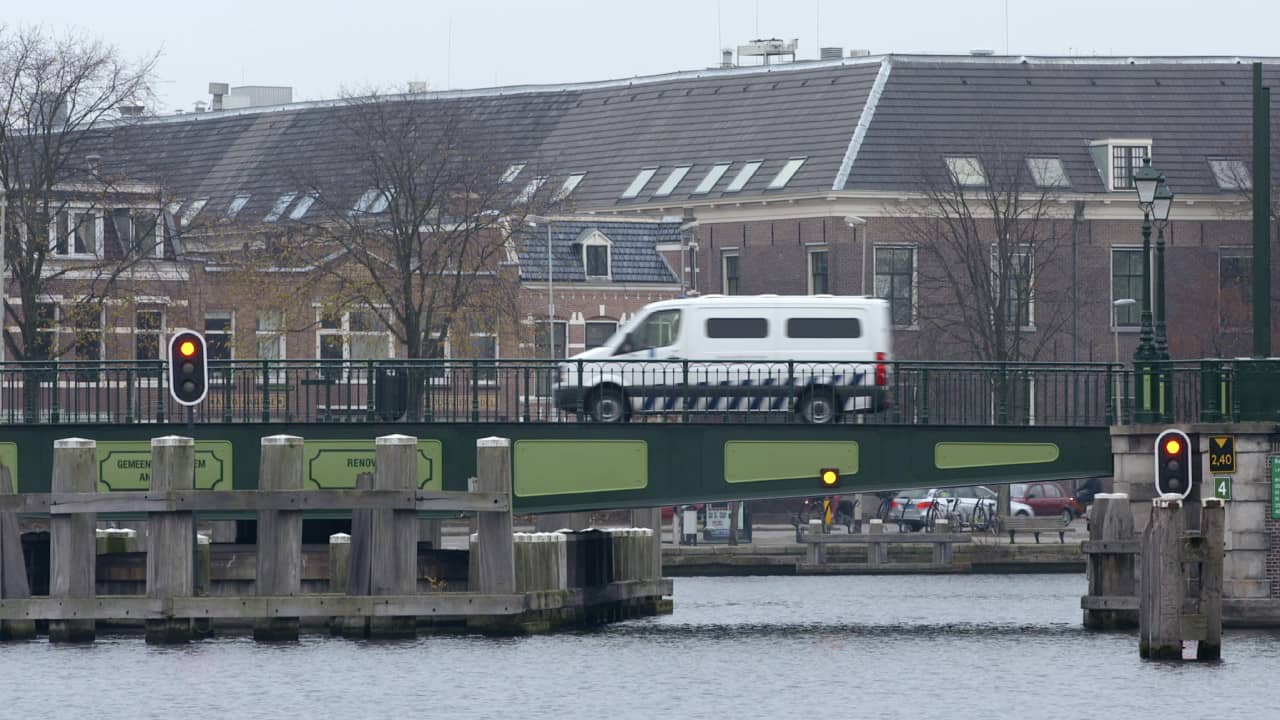
(On a van and a uniform can be read: Custodial Institutions agency. Someone places a finger on a scanner. A door and a hatch are opened. Someone closes a door and locks it. Onscreen title: This is DJI Immigration detention. Voice-over:)
The Netherlands has been locking up people as a form of punishment
for quite some time.
The Custodial Institutions Agency, or simply DJI,
carries out this task on behalf of the Ministry of Justice and Security.
The punishments and measures handed down by the judge
are enforced by well-trained and motivated personnel.
This makes DJI a specialist in detention.
A large organisation that employs more than 14,000 people.
DJI contributes to the safety of every one of us,
by enforcing punishments and measures handed down by the judge.
This can happen within the walls of the correctional institution,
but also outside of one.
(People walk through a hall and a hallway.)
Every person detained at DJI is called a detainee.
DJI prepares detainees for their return to society.
This is done to prevent them from reverting to criminal behaviour.
We call this: reducing recidivism.
The correctional institutions hand out 80,000 sandwiches per day.
Approximately 11 million kilometres are travelled per year
for transport and support.
And an average cell measures 5 x 2 x 2.5 metres.
(An animation appears.)
Linen must be washed for more than 11,000 beds.
An adult detainee spends an average of 3.5 months behind bars.
There are different types of detainees.
Adult detainees, juveniles, patients and foreign nationals.
DJI's division prison administration and immigration detention
(The animation disappears. DJI staff walk past a counter.)
is responsible for all foreign nationals that are held by DJI.
Most foreign nationals are held in detention centres.
But for families with children and single underaged foreign nationals
there is the enclosed family facility in Zeist.
Immigration detention is a very complicated matter.
DJI works closely with many other organisations
(A door closes. Someone fills in a form.)
like the police and the Central Agency for the reception of asylum seekers.
A last resort, such as immigration detention, may be chosen
when someone tries to prevent deportation to the country of origin.
(A man undergoes a security scan. A passport photo is taken of another man.)
Generally it applies that people who have been refused entry at the border,
and people who are not allowed to stay in the Netherlands any longer,
yet refuse to leave, end up in immigration detention.
They are then deported to their own country as prescribed by the law.
(Frances:)
The period for which they're held
depends on the actual foreign national's willingness to cooperate.
If the foreign national cooperates, the period can be shortened dramatically.
DJI ensures during the immigration detention phase,
that cooperation organisations get all the room they need
to allow for the best possible preparation for the person's deportation.
(A man walks into a cell, whereupon an employee closes the door.)
(A man walks down a hall passed locked cell doors. Onscreen text: DJI. Where freedom ends and where it can begin again.)
(The Dutch coat of arms with next to it: Custodial Institutions agency. Ministry of Justice and Security. The image becomes blue with white. Onscreen text: All rights reserved. The production of copies and/or the distribution of (parts of) this film is strictly prohibited is strictly prohibited. None of the individuals portrayed in this film is actually being detained.)
(A special thank you to the DJI employees. This a publication of the Custodial Institutions Agency DJI Corporate Communication department. For more information visit www.dji.nl. Copyright 2019.)